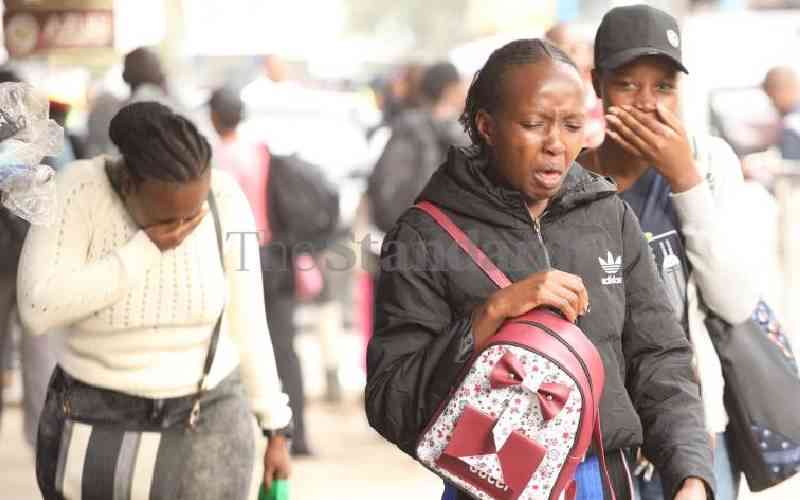
I understand certain areas of the city remain encased in a teargas haze.
These include parts of Moi Avenue, Tom Mboya Street, and the Khoja Mosque precincts.
Hawkers, in characteristic zeal, have descended with masks and kerchiefs.
This affirms the disproportionate use of force by police, the sort that was prohibited by Malindi High Court judge Mugure Thande.
It also reveals the sort of waste Kenyans are demanding must come to an end.
Journalists recorded one case of a youngster who choked on teargas to an early grave, while a police officer lost his hands after a canister blew up his hands.
We also saw a canister hurled inside a moving matatu, so we can safely say the usage of the arsenal has been highly questionable.
Since Prezzo Bill Ruto has promised to fully account for every action by police, I’d be keen to hear how many canisters were hurled at the protesting youth and the cost of those contraptions.
And it’d be useful to know what the long-term consequences of inhaling the gas could be. I’m talking of the areas still engulfed in the fumes, days after they were hurled into the air.
That said, I am getting to understand why policing is so expensive in our country, and why entities like the National Intelligence Service have been allocated a budget double that of the Judiciary, at Sh44 billion.
These monies are never audited by public watchdogs like the office of the Auditor General under a blanket veil of “national security,” which makes a lot of sense because Kenyans would be outraged to learn that the daylight abductions (Prezzo Ruto says that’s how police enforce their summons) also cost them tidy sums.